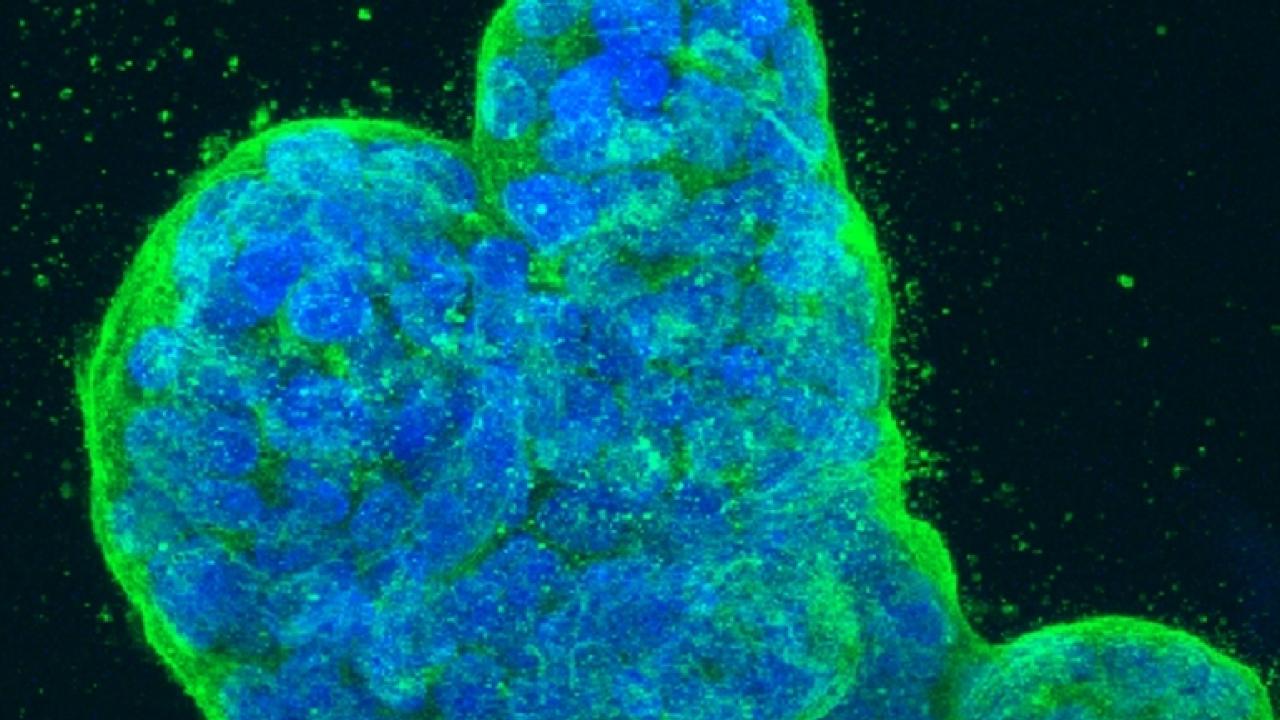
Breast cancer cells. Image by NIH
Scientists have long known that cancer can hijack a cell’s existing regulatory circuitry and transform healthy cells into deadly malignancies. But a new discovery from UC San Francisco demonstrates that cancer is more than just a mutineer that seizes control of the cell’s administrative operations — it’s also a clever engineer, capable of constructing entirely new disease-promoting networks out of raw materials readily available in the cell.
In a study published Nov. 5 in Nature Medicine, UCSF researchers show that cancer can make edits to run-of-the-mill RNA sequences to produce what the researchers dubbed “oncRNAs” — a previously unknown class of regulatory molecules that can turn a relatively meek malignancy into a far more aggressive, far deadlier disease.
OncRNAs may also provide clinicians with an important tool for diagnosing cancer. Because they were found in blood drawn from breast cancer patients, the researchers believe oncRNAs may one day allow clinicians to perform non-invasive “liquid biopsies” that require nothing more than a blood sample to diagnose and characterize a patient’s unique malignancy.
From Hijacker to Engineer
Though scientists have long known that cancer cells promote their continued survival by commandeering and repurposing the cell’s normal regulatory machinery, UCSF researchers Hani Goodarzi, PhD, postdoctoral fellow, and a member of Hellen Diller Family Comprehensive Cancer Center, Lisa Fish, PhD, and HHMI Medical Fellow Steven Zhang wondered whether malignancies might also be able to go a step further, engineering entirely new regulatory pathways that fall outside the purview of normal cells.
According to Goodarzi, senior author of the new paper and an assistant professor in the department of biochemistry and biophysics, this would be possible if two criteria were met. First, cancer cells would need a pool of biomolecules that don’t exist in normal cells; these molecules would exist only as an emergent property of cancer, materializing after the onset of malignancy. Second, these molecules would have to have regulatory potential — cancer would have to be able to use them to execute tasks not carried out in healthy cells.
The Candidates Emerge
While studying small RNAs (sRNAs) — a class of RNA that regulates gene activity rather than coding for functional proteins — the researchers identified candidates that appeared to satisfy these criteria: potential regulatory molecules seen in cancerous cells that were largely absent in healthy tissue.